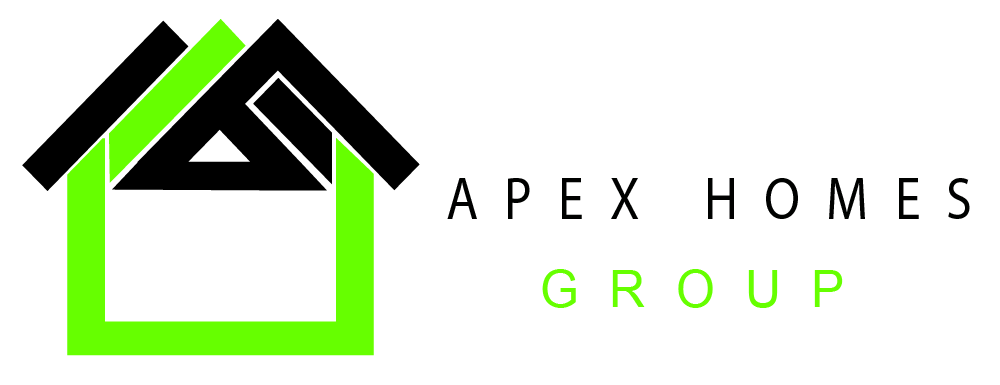Low housing inventory, buyers moving to the suburbs, construction and renter affordability issues are likely to shape the course of 2021.
Housing Market Expectations in 2021
The housing market continues to flourish as many buyers flock to the suburbs for more space, affordability and options that aren’t necessarily tied to an employer’s location.
THE CORONAVIRUS pandemic that took over much of 2020 led to some unexpected outcomes in the housing market. After a brief initial period of low activity in home sales, homebuyer activity vastly outweighed available homes throughout much of the U.S. for the remainder of the year as people sought more space, ideal home features and affordability.
Now, with the promise of widespread access to COVID-19 vaccines on the horizon, extended time at home is shaping how people live every day, as well as what they want from their home and where they want to live well beyond the the pandemic.
In 2021, here are a few trends shaping up for the housing market:
- Interest rates are expected to remain low but increase gradually.
- Average home prices will rise.
- Home inventory will remain low, despite plenty of new construction.
- Homebuyers will stay focused on the suburbs.
- Renters hurt financially by the pandemic will continue to struggle, and rental assistance is needed.
Here’s what experts are predicting for buyers, sellers, renters and new construction in 2021.
Buying
The coronavirus pandemic drove mortgage interest rates to historic lows for most of 2020, and all signs point to 2021 beginning with continued historically low interest rates. On Dec. 17, Freddie Mac reported the average mortgage interest rate for a 30-year, fixed-rate mortgage was 2.67%, more than 1 percentage point lower than the average rate at the same time in 2019 and a new 50-year low for average rates.
Low interest rates, the continued creation of new households across the U.S. and a desire for more space among existing homeowners drove demand through the roof in 2020. Many areas were seller’s markets, meaning there weren’t enough homes available to match the number of active buyers.
In many ways, the high demand and positive growth in home prices over the course of 2020 were a surprise, as skyrocketing unemployment created concerns about unpaid mortgages on a widespread scale. “I think a lot of us were preparing for a crash,” says Danielle Samalin, CEO of Framework, an online platform focused on empowering homeowners.
Instead, the housing market continues to flourish, although dense urban centers are seeing less interest as many buyers flock to the suburbs and outlying areas for more space, affordability and options that aren’t necessarily tied to an employer’s location. Walkability to shops or outdoor attractions still has its benefits, but buyers appear focused most on having enough personal space for everyone in the family.
Many of the buyers (and renters) leaving the city for the suburbs were likely to make that move eventually, says David Sigman, executive vice president and principal of LCOR, a real estate investment, development and management company based in New York. “(The pandemic) just accelerated that, and that’s why we saw this rush to the suburbs,” Sigman says.
With expectations for higher rates of homebuilding and a relaxation of the pent-up demand following the shut-downs early in the pandemic, experts expect sellers to have the advantage in 2021.
But homebuyers shouldn’t feel concerned about being able to find a home. If the economy remains stable, mortgage interest rates will likely tick back up over the course of the year while remaining low from a historical perspective. Realtor.com predicts mortgage rates will end the year with an average around 3.4%.
Because the market is expected to remain in favor of sellers throughout 2021, Samalin says her company is focused on helping buyers navigate the homebuying process in a way that will help them avoid getting emotionally caught up when faced with stiff buyer competition.
For buyers who are still worried about job stability, holding off on a home purchase may be the right move. However, lenders have proven through the course of the pandemic that they are willing to work with borrowers facing unemployment or expensive medical bills in order to avoid a future foreclosure crisis.
“No one wants people to suffer, and everyone wants people to take up the options that are available to them. Foreclosure is expensive to the lender,” Samalin says.
Selling
A major contributor to the low supply of homes on the market in the latter half of 2020 has been the fact that many homeowners are choosing not to relocate now – especially if they’re already in a house with plenty of space for remote work and virtual schooling.
While low mortgage interest rates can be an incentive to buy a new home now, they’re also an incentive for people to refinance and stay in their current home longer. “Making mortgage money so inexpensive contributes to the ‘why move?’ (perspective),” says Mark Fleming, chief economist for title insurance company First American Financial Corporation.
Additionally, most home sellers don’t effectively increase housing inventory without also contributing to rising demand. “They’re turning around and buying a home, usually in the same market,” says Danielle Hale, chief economist for realtor.com. “Ultimately, they don’t lead to a net increase of inventory.”
The expected increase in home prices, however, may entice some owners to sell. With home prices closing out 2020 around 7.6% above the average home price at the end of 2019, realtor.com predicts 2021 will yield an additional 5.7% increase in home prices by the end of the year.
Keep in mind that these numbers represent the expectation for housing on a national scale. The effects on individual housing markets will vary widely. Speaking with a local real estate agent can help you learn more about how home prices and activity are faring in your area.
Of course, the continuation of the pandemic as the vast majority of the population waits for access to a vaccine leaves room for uncertainty. Hale warns of the possibility of a double-dip recession that could remove some buyers from the market as affordability again becomes a key concern.
Even if that happens, however, current homeowners are likely to be largely OK, Hale says. “Homeowners tend to be in a point in their lives – they tend to be a bit older, they have more savings, they have resources to tap if something happens,” Hale says.
Renting
The pandemic’s economic impact has been far less kind to the rental market in the U.S. than the homeowner market. Renter households have, on the whole, been more deeply impacted by the shutting of retail stores, restaurants and other workplaces requiring in-person work that isn’t necessarily considered essential. As a result, the ability of tenants to afford rent has been a growing concern during the pandemic.
As of Dec. 6, just 75.4% of apartment households in the U.S. made a full or partial rent payment for the month of December, according to a survey of 11.5 million units of professionally managed rentals by the National Multifamily Housing Council. It’s a noticeable drop from the 80.4% of households that had paid full or partial rent by Nov. 6. By the end of the month of November, 93.6% of households had made a full or partial payment, so there is an expectation that the share of renters covering their rent in December will rise before the end of the year.
While temporary and partial eviction moratoriums at federal, state and city levels have helped avoid mass evictions throughout the country thus far, many are concerned about what will happen when moratoriums are lifted in 2021 if financially strapped renters do not receive relief.
On Dec. 21, Congress passed a new coronavirus relief package that will provide $25 billion in rental assistance and an extension of the Centers for Disease Control and Prevention-issued eviction moratorium until the end of January 2021, in addition to unemployment assistance and stimulus checks. Still, for those who have struggled financially throughout the pandemic, money problems are unlikely to end overnight and will be a factor throughout 2021.
But financial struggle isn’t the only thing the rental industry will see in 2021. Real estate information company Zillow expects to see the creation of new renter households to bring fresh demand to the market as the country begins to rise out of the pandemic.
“With a vaccine on the horizon and Gen Z continuing to graduate from college, we expect the cloud of uncertainty surrounding the pandemic to lift and demand for rental units to surge in 2021,” Zillow senior economist Chris Glynn said in a press release. “Though the coming rebound in the rental market is good news for some, it will certainly put millions of renters who were hit hard by pandemic-related income loss in an even more tenuous position, and further government intervention will likely be needed to avoid a painful wave of evictions.”
The pandemic has additionally shaped how many apartment communities are approaching their amenities. Common spaces including a pool, rooftop deck and lounge area have been popular in apartment communities for years, but now apartment owners and developers are looking at how these common areas can also meet the needs of more remote workers, while allowing for the privacy people will want.
“We’re going to have an increase in need for amenity space,” says Simon Aftalion, development director for Markwood, a real estate investment, development and management firm based in Beverly Hills, California. “Large space can be bifurcated into smaller, more intimate settings … (and) directly contiguous to an outdoor element.”
New Construction and Development
The answer to high demand among homebuyers is to build new houses, and for those houses to meet the space requirements many are seeking after a year spent working, learning and relaxing all at home.
Fortunately, homebuilders appear to be rising to the challenge. The U.S. Census Bureau reported more than 1.54 million housing starts, or the beginning of construction on a house, in November this year. The rate of new home construction is 1.2% higher than October, and 12.8% above the rate of housing starts in November 2019.
Looking forward to 2021, homebuilders are expected to continue to amp up new construction. Building permits issued, which reveals planned construction on homes that has not yet started, were nearly 1.64 million for November, according to the U.S. Census Bureau. For the entirety of 2021, realtor.com predicts housing starts will be up 9% compared to 2020.
Even with consistent growth in builder activity, most housing markets can still expect the number of homebuyers to outpace the inventory of available homes. “I’m pretty sure you just can’t build it fast enough,” Fleming says.
For all new construction, you can expect popular home features that have become necessities amid the pandemic to be front and center. In particular, extra rooms or nooks for at least semi-private remote work and school spaces will be a major focus, as well as outdoor space that makes it easy to personalize outdoor living.
Aftalion says in apartment buildings in more dense parts of Los Angeles, private outdoor space has become the focus, including when square footage is limited “even if that means the size of the unit’s (interior is smaller), as long as you can go work and do a Zoom call so it’s shaded, the sun isn’t in your face and it’s next to your (apartment),” he says.
While planned construction on new apartments and condos will go forward in 2021, the public’s shift in preference to a more suburban setting means you won’t see as many builders eager to start planning for more multifamily housing in city centers for a bit – at least not until the future becomes clearer for a post-pandemic housing market.
“We’re expecting kind of a slowdown. I think there’ll be fewer apartment buildings that get started in 2021 than in other years,” Sigman says.

